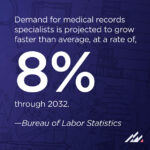Article
Three things keeping financial leaders up at night
* This content was originally published in February 2022. It has been updated to include more recent statistics.
When you hear “revenue cycle,” what comes to mind? For many, the term is synonymous with medical billing, but it’s much bigger than that. The Healthcare Financial Management Association (HFMA) defines revenue cycle as, “all the administrative and clinical functions that contribute to the capture, management, and collection of patient service revenue.”
Revenue cycle directors and CFOs know the financial heartbeat of an organization drives its overall health and enables the best care delivery possible across the community. As the business of healthcare grows increasingly complex, these three things remain top-of-mind for financial leaders:
1. Days cash on hand and cost to operate
 Days cash on hand signifies the number of days an organization can continue paying its operating expenses with the amount of cash that is currently available. Many healthcare organizations strive for at least 60 to 90 days cash on hand. Falling under 60 days may be cause for concern in the eyes of the CEO, board members and financial investors. Revenue cycle directors and CFOs may want to see daily and monthly revenue on a continuous basis so they know if their organizations can maintain at least 60 days cash on hand.
Days cash on hand signifies the number of days an organization can continue paying its operating expenses with the amount of cash that is currently available. Many healthcare organizations strive for at least 60 to 90 days cash on hand. Falling under 60 days may be cause for concern in the eyes of the CEO, board members and financial investors. Revenue cycle directors and CFOs may want to see daily and monthly revenue on a continuous basis so they know if their organizations can maintain at least 60 days cash on hand.
Cost to operate is another key measure for CFOs. Also known as the operating margin, this figure is the cost of running the organization against the revenue it generates. If the cost to operate rises while revenue decreases or stagnates, then the CFO must find a way to reduce costs.
When these measures are subpar, organizations need ways to accelerate cash flow. Looking at the very beginning of the revenue cycle journey—patient registration and scheduling—is one good place to focus. Financial leaders should implement strategies and solutions that prioritize the following:
- Accuracy and completeness of data captured up front
- Verifying eligibility and medical necessity
- Obtaining authorizations (when applicable)
Integrating this robust information with downstream revenue cycle processes means smoother payment processing with payers and, in turn, faster reimbursement and reduced denials.
2. Sustaining a virtual workforce
 Though we’re past the height of COVID-19, many aftereffects of the pandemic remain, including the trend of remote work. An estimated 31% of healthcare support employees work remotely full time, with an additional 14% working remotely part time. As a result, financial leaders at healthcare organizations are navigating the nuances of managing a virtual workforce, such as maintaining staff productivity. Additionally, according to the Bureau of Labor Statistics (BLS), demand for medical records specialists is projected to grow faster than average, at a rate of 8%, through 2032. This competitive labor market, combined with a shortage of experienced revenue cycle professionals, means hiring qualified talent has become more difficult and more costly than ever.
Though we’re past the height of COVID-19, many aftereffects of the pandemic remain, including the trend of remote work. An estimated 31% of healthcare support employees work remotely full time, with an additional 14% working remotely part time. As a result, financial leaders at healthcare organizations are navigating the nuances of managing a virtual workforce, such as maintaining staff productivity. Additionally, according to the Bureau of Labor Statistics (BLS), demand for medical records specialists is projected to grow faster than average, at a rate of 8%, through 2032. This competitive labor market, combined with a shortage of experienced revenue cycle professionals, means hiring qualified talent has become more difficult and more costly than ever.
To navigate these challenges, healthcare organizations should consider adopting robotic processing automation (RPA). Put simply, RPA is bot technology that automates business processes usually performed by humans. RPA can offload repetitive revenue cycle tasks from people so they can maintain productivity and focus on higher-value work requiring human intervention. This is particularly beneficial for those organizations facing workforce gaps.
3. Improving financial metrics
Before and during the pandemic, healthcare organizations have been navigating new and shifting business models to stay afloat. Moreover, they have absorbed new payer models to continue receiving reimbursements for services rendered.
With these coinciding changes, revenue cycle directors and CFOs need flexible analytics solutions that enable them to drill down into various contracts and methods of payment. Additionally, they should consider those that provide intelligence for business value. For example, today there are solutions that provide insights into how different programs and services are performing. Armed with this data, financial leaders can confer with their colleagues and executives to determine strategic next steps, such as changing the programs’ or services’ hours to maximize profitability.
Looking for resources on how to address common RCM challenges? Check out additional information on our website and download our free guide on hospital financial stability for more insights.













